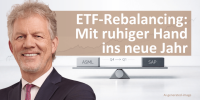The Nordic region is by many associated with vast highlands, deep forests, Nordic film noir and the trendy urban capitals Stockholm, Copenhagen, Helsinki and Oslo. In economic context you can from time to time read about what is labeled the “Nordic economic model”. Much simplified, it refers to the social and economic structuring of the Nordic countries, with its foundation and bedrock built on AAA rated governments. In effect providing a redistributive taxation system ensuring a high degree of social protection, coupled with the local governments ability to stimulate the local economy. Many economists point to this model, in order to explain, in part, why the Nordic region performed relatively well during and after the Financial Crisis, and further why the region is coming out with strong macroeconomic figures yet again. In brief, this can be exemplified by Norges Bank, which is the first central bank to signal rising interest rates, already at the beginning of 2022.
The picture is by no means rosy for the Nordic region either, but so far, the economic contraction and following rebound over the summer months have been uplifting. In parts thanks to a highly developed digital infrastructure that softened the transition for government bodies, corporations, universities and schools during the pandemic. Specifically, for the summer months, much attention has been directed towards the phenomenon labeled as staycation, meaning that the Nordic residents have spent their money at home, rather than holidaying outside of the region. This has vastly boosted retail spending for one.
Investing in the Nordic region can be interesting based on the macroeconomic picture. One way of approaching this market is via the Nordic high-yield market. Interestingly the market offers structural diversification relative to European and American markets, as a very high proportion of the underlying bonds are so called FRN’s (floating rate notes, linked to the 3-month intermarket rate in the Nordics, with floor set at zero). The tenors, or time to maturity, are also shorter, mostly in the range of 4-5 years, compared to 5-9 years for the European and American markets.
At Pareto Asset Management we take the specific characteristics of the Nordic bond market further, and construct ultra-short duration exposure, in effect resulting in a fund that provides protection against rising interest rates. Especially sudden shocks, with inflation and rising interest rates, would be potentially devastating for owners of long dated government bonds and those with corporate fixed rate bond portfolios. In addition to an effective protection against such shocks, the Nordic bond market offers attractive credit spreads, meaning that the premium, or the rate above the 3-month intermarket interest rates are attractive compared to for example European corporate bonds. In part this premium can be explained by the smaller market size and the fact that the Nordic market is unrated. The importance of in-house credit analysis tools and extensive local market knowledge is amplified in such a market. But importantly, it also creates opportunities in the context of active portfolio management. At Pareto Asset Management, we see this as a genuine advantage and further as an attractive source for our international clients, in their quest for yield and optimal global portfolio construction.
Read more about Pareto’s three corporate bond funds in the latest monthly update
09/19/2020
Swiss Fund & Finance Platform




